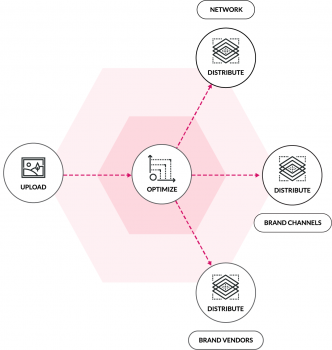How Hotel Chains can Better Market Their Sub-Brands
Hotel chains first introduced sub-brands as a way to provide more catered experiences to a wider breadth of travel shoppers. In the age of personalization, more and more sub-brands popped up across the market in an attempt to provide even more targeted experiences. However, the influx of new brands has saturated the market and made it difficult for travel shoppers to differentiate between sub-brands, often leading to customer confusion.
Brand proliferation to the point where no one truly understands the difference between options, coupled with the inability of brands to enforce brand standards means that the power of most hotel brands has been severely compromised.
– Peter O’Connor, Direct of MBA in Hospitality Management at ESSEC Business School
With over 1,000 sub-brands in the hospitality industry as of 2018, a strong sub-brand with good property-brand fit is crucial. Property-brand fit is a term coined in a 2015 study by Chekitan S. Dev from the Cornell University of Hotel Administration to describe how well a brand complements a hotel property. Dev concluded that 40% of customer conversion for a branded hotel depends on property-brand fit, emphasizing how important it is for hotel chains to showcase property-brand fit for their chains.
How can chains better represent their property-brand fit?
On a brand website, hotel chains can easily outline the benefits of each of their sub-brands. However, the recent upsurge in OTAs makes it difficult for chains to maintain their brand presence across all travel agencies. The lack of brand control and consistency makes it difficult for travel shoppers to see the difference between two similar sub-brands.
Chains must present a clear brand message on OTAs through their hotel images and descriptions. Hotel images and descriptions are the only way for chains to justify the price of their rooms. Especially on OTAs, which are primarily focused on price, chains are more susceptible to misrepresenting their sub-brand and losing out on bookings.
A content management system like VScape offers hotel chains a way to develop a strong brand presence and highlight property-brand fit across both direct channels and third-party travel sites.

All content uploaded to VScape gets optimized for distribution to our network, brand channels, and brand vendors.
VScape offers intuitive processes to collect your media including direct upload to the UI, direct connection to your corporate image source, or seamless login integration with your corporate portal. In addition, the workflow and approval process allows your brand managers to review property photos to ensure that they match the specific property-brand fit before they’re available for distribution to Leonardo’s network. Brand managers can access all of a sub-brand’s properties through a centralized location in order to efficiently cross-reference photos with brand guidelines. This allows your brand to decentralize the work of collecting media, while centralizing the control of where the media is distributed.
Once photos are approved, Leonardo’s image distribution process helps chains better demonstrate their property-brand fit by closing the gap between consumer’s brand expectations and their actual experiences. VScape normalizes and simplifies the delivery of all hotel photos so that travel channels can easily map to their categories and select from one of 14 sizes that best fits their display needs. This allows travel channels to better personalize their property listings to their shopper’s needs and drives more revenue for both parties.
Moreover, VScape can also help integrate these brand-approved photos into a Media Library, a secure vault of photos that provides publishers, agencies, media, and clients with your hotel chain’s latest images. Not only does this help ensure brand standards but it also allows you to share your images with anyone who needs them whether that be your sales and marketing teams or external companies like publishers or marketing agencies.
Hotel chains using VScape can rest assured that their sub-brands’ property-brand fit is conveyed across the world’s leading travel booking channels.
Want to learn more about how to better market your sub-brands and increase revenue? Contact us today.
